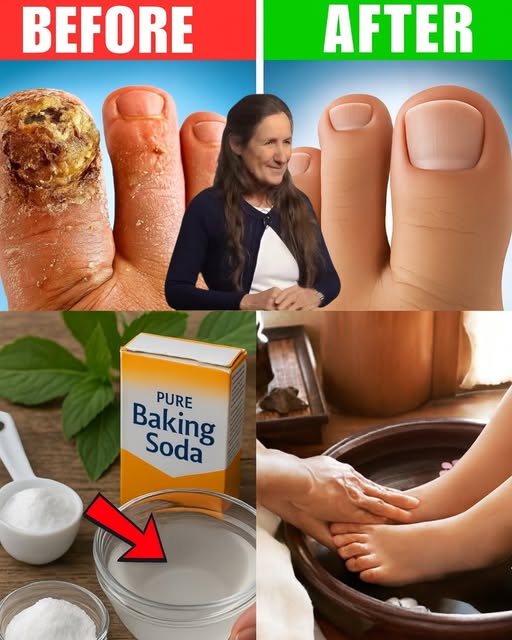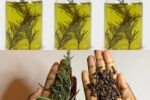Picture this: slipping into sandals on a sunny day, only to hesitate because of unsightly, thickened toenails. If toenail fungus has you hiding your feet, you’re not alone. This stubborn condition isn’t just a cosmetic nuisance—it’s uncomfortable, persistent, and can chip away at your confidence. But what if you could tackle it naturally, using gentle remedies that support your body’s healing power?
I’ve been there, battling toenail fungus and frustrated by endless products promising miracles. Inspired by natural health advocates like Barbara O’Neill, I embarked on a journey to clear my nails using simple, science-backed remedies. The results? Healthier, clearer nails—and a newfound respect for nature’s solutions. In this guide, I’ll share my approach, dive into why it works, and arm you with essential tips to fight toenail fungus safely, especially if you’re a senior or health-conscious American. Ready to step confidently into clearer nails? Let’s dive in.

🦶 What Is Toenail Fungus and Why Is It So Stubborn?
Toenail fungus, or onychomycosis, is a pesky infection caused by fungi that love warm, damp environments—like sweaty shoes or public showers. It often starts innocently: a small white or yellow spot under the nail. Left unchecked, it spreads, turning nails thick, brittle, and discolored. For some, it even causes pain or crumbling.
Why is it so hard to beat? Several factors make toenail fungus a formidable foe:
🔄 Slow Nail Growth: Nails, especially toenails, grow slowly—about 1 mm per month. This gives fungi time to dig in.
🩺 Reduced Circulation: As we age, blood flow to the feet decreases, limiting the body’s ability to fight infections.
🛡️ Weakened Immunity: A less robust immune system, common in seniors, struggles to fend off fungal invaders.
🌡️ Ideal Conditions: Fungi thrive in moisture and warmth, making feet a perfect breeding ground.
If ignored, toenail fungus can worsen, spreading to other nails or causing discomfort that affects daily life. The good news? With patience and the right approach, you can turn the tide. Let’s explore a natural method that’s gaining buzz for its simplicity and promise.
🌿 The Natural Approach That Changed My Nails
Natural health educator Barbara O’Neill has inspired countless people with her practical, body-supporting remedies. While she doesn’t claim to “cure” toenail fungus overnight, her philosophy—creating an environment where fungi can’t thrive—resonated with me. After trial and error, I adapted a method based on her advice and similar natural protocols. Here’s the step-by-step routine that helped me reclaim my nails:
Step 1: Apple Cider Vinegar Soak (Evening Ritual)
🧴 Why It Works: Apple cider vinegar’s acidity creates an unfriendly environment for fungi, with studies showing mild antifungal properties.
How to Do It:
Mix 1 part raw, unfiltered apple cider vinegar with 2 parts warm water in a basin.
Soak your feet for 15–20 minutes, letting the solution penetrate the nail bed.
Dry thoroughly, especially between toes, to starve fungi of moisture.
Step 2: Baking Soda Paste (Post-Soak Power)
⚗️ Why It Works: Baking soda’s alkaline nature disrupts fungal growth, complementing vinegar’s acidity for a one-two punch.
How to Do It:
Mix baking soda with a splash of water to form a thick paste.
Apply directly to affected nails, focusing on the edges and cuticles.
Let it sit for 10–15 minutes, then rinse and dry completely.
Step 3: Tea Tree Oil Finish (Overnight Magic)
🌱 Why It Works: Tea tree oil’s antifungal and antibacterial properties are backed by small studies, making it a natural heavy-hitter.
How to Do It:
After drying, dab a small amount of pure tea tree oil (diluted with a carrier oil like coconut if sensitive) onto the nail.
Cover with a clean sock and let it work overnight.
This routine isn’t a quick fix—consistency is key. I saw subtle improvements after 2–3 weeks, with clearer nails emerging over months. The process taught me patience and the power of natural synergy.
🔬 Does This Natural Method Really Work?
While my experience was transformative, it’s fair to ask: what does science say? Research on natural remedies for toenail fungus is promising but limited, focusing on early-stage infections or preventive care. Here’s the breakdown:
🍎 Apple Cider Vinegar: Its acetic acid shows antifungal effects in lab studies, though human trials are sparse. It’s most effective for mild cases.
🧂 Baking Soda: By altering pH, it creates a hostile environment for fungi. Anecdotal success abounds, but clinical data is thin.
🌿 Tea Tree Oil: Small studies, like one in the Journal of Family Practice, found it reduced fungal growth when applied daily for months.
🌼 Oregano Oil (Optional): Contains thymol, a potent antifungal, but it’s harsher on skin and less studied.
These remedies shine in early or mild cases, or as part of a broader foot care routine. For severe infections—think painful, crumbling nails—natural methods may not suffice alone. Combining them with medical advice often yields the best results.
⚠️ Safety First: Essential Precautions
Natural doesn’t always mean risk-free, especially for seniors or those with health conditions. Before starting, keep these safety tips in mind:
🧪 Patch Test Oils: Tea tree or oregano oil can irritate sensitive skin. Test a small amount on your arm first.
🚫 Avoid Open Wounds: Skip soaks if you have cuts, sores, or diabetic foot issues, as vinegar or oils can worsen irritation.
🧦 Dry Thoroughly: Moisture fuels fungi. Use a clean towel and ensure toes are bone-dry after each soak.
⚖️ Don’t Overdo Vinegar: Excessive acidity can dry out or irritate skin, especially for older adults with thinner skin.
🏥 Know When to Stop: If nails become painful, severely thickened, or the infection spreads, see a podiatrist. Prescription antifungals or laser therapy may be needed.
For seniors, conditions like diabetes or poor circulation raise the stakes. Always consult a doctor before diving into new treatments, and share this routine with them for tailored advice.
🛡️ Preventing Toenail Fungus From Coming Back
Clearing fungus is only half the battle—keeping it at bay is just as crucial. These habits became my daily defense, helping me maintain healthy nails long-term:
🧦 Fresh Socks Daily: Swap socks if your feet sweat, and choose breathable cotton or moisture-wicking blends.
👟 Breathable Shoes: Ditch tight, non-ventilated footwear for leather or mesh shoes that let feet breathe.
🧼 Disinfect Tools: Clean nail clippers and files with alcohol after each use to avoid reintroducing fungi.
🌬️ Antifungal Powder: Sprinkle a natural antifungal powder (like one with tea tree) into shoes if you’re prone to sweaty feet.
✂️ Trim Smart: Keep nails short and filed to reduce hiding spots for fungi.
These small changes made a big difference, turning my feet into a fungus-free zone. What’s your go-to foot care habit? Share in the comments to inspire others!

🌟 My Journey and Why It Matters
My battle with toenail fungus wasn’t just about aesthetics—it was about reclaiming confidence and comfort. The natural approach, inspired by advocates like Barbara O’Neill, taught me that healing takes time, consistency, and respect for my body’s needs. While not a miracle cure, this method—paired with diligent foot care—helped me see results where commercial products failed.
For health-conscious Americans, especially seniors, this journey offers hope. Toenail fungus doesn’t have to define your feet or dampen your summer vibes. By combining natural remedies with smart habits and medical guidance when needed, you can step toward clearer nails and healthier feet.
🚀 Take the First Step Today
Ready to tackle toenail fungus naturally? Start with a simple vinegar soak tonight, or inspect your nails for early signs. If you’re unsure, book a podiatrist visit for peace of mind. Your feet deserve to shine, and with patience, they will.
✅ Want More? Dive into our health and wellness section for natural skin and foot care tips.
🦶 Spread the Word: Know someone struggling with toenail fungus? Share this guide—they’ll thank you for it!
Disclaimer: This article is for informational purposes only and does not replace professional medical advice. Consult a doctor or podiatrist before starting any treatment, especially for chronic or painful conditions.



